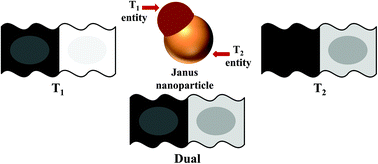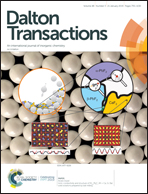Janus nanoparticles for contrast enhancement of T1–T2 dual mode magnetic resonance imaging†
Abstract
The accuracy of magnetic resonance imaging (MRI) scanning can be improved using a multifunctional nanosystem having T1–T2 dual contrast enhancement. Specifically, the combination of both T1 and T2 effects in a single system helps in acquiring cross validated information during dual mode MRI and reduces the required dose. In this study, polyethylene glycol (PEG) stabilized MnFe2O4@MnO Janus nanoparticles were developed as novel dual-mode MR imaging agents. MnO contributed to T1 contrast whereas MnFe2O4 enabled T2 contrast. The PEG molecules afforded solubility and stability to the contrast agent in water, making it acceptable for biomedical purposes. The biocompatibility of the developed nanosystem was confirmed by cell viability studies. The r2/r1 ratio remained at a suitable value, justifying the applicability of the contrast agent for dual mode MRI. Finally, the efficiency of the agent for T1–T2 contrast enhancement was confirmed through in vitro and ex vivo MRI experiments.



 Please wait while we load your content...
Please wait while we load your content...